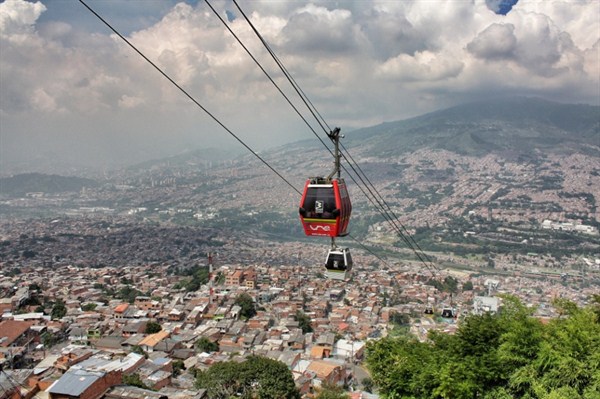Anyone trying to understand Latin American politics should pay close attention to urban areas. Of the 600 million people in the southern part of the Americas, 80 percent now live in cities. However, old narratives die hard, which explains why English-speaking articles about Latin America still disproportionately focus on rural issues, peasant struggles, land reform and related topics. Of course, these issues remain relevant, because land ownership, rural or urban, is still a major source of conflict. But it is clear that urban issues will increasingly dominate the region’s political future.
Take for instance Venezuela, the most polarized—not to say troubled—of all Latin American democracies. To understand contemporary Venezuela, one must go back almost half a century to an urban revolt on Jan. 23, 1958. On that day, an angry crowd invaded the unfinished housing blocks commissioned by dictator Marcos Perez Jimenez that were to be inaugurated soon. Named “2 de Diciembre” after the day in December that Perez Jimenez took “legal” power in 1952, the dozens of high-rise slabs were being built on what had been the largest informal settlement in Caracas, and the apartments in them were being given to those favored by the ruling political party, rather than the original inhabitants to whom they were promised. The invasion of the construction site on Jan. 23 triggered the fall of Perez Jimenez. To this day the site is known as 23 de Enero, or 23rd of January, and has been a hotbed of political and social activism.
While this history is well-known by Latin American sociologists, political scientists and urban historians, few people pay attention to the fact that it was in the highly energized and politicized community of 23 de Enero that young army officer Hugo Chavez Frias started his career. It was from the barracks neighboring the site that he launched his failed coup in 1992. In April 2002, the inhabitants of 23 de Enero were among the first to take to the streets to protest the coup against then-President Chavez, bringing him back to power 48 hours later. In short, anyone who really wants to understand Venezuela today must study the urban social movements that unfortunately have not been sufficiently and thoroughly historicized.

